
views
Learning Sword Fighting Basics

Assess your melee environment. Awareness of where you are can help you assess possible disadvantages and be able to turn your environment to your advantage. If you can maneuver yourself so that you can attack and/or protect yourself more effectively, you are more likely to win. Some sample environmental elements to consider: Bright sunlight can blind you if it's at the right angle. Forcing your opponent to have the sun in his or her eyes will make it much harder to see you. Try not to stand still, as this allows you to avoid being hit and gives you possible openings for attacks. Stand in a slanted position with bent knees making yourself a smaller target Try to think moves in advance, the smart swordsman doesn't lose Natural barriers such as cliffs, ocean, or walls cut off mobility and escape routes. Urban environments typically encompass enclosed spaces, such as rooms or streets.
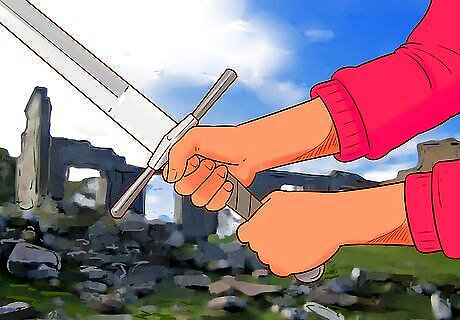
Grip the sword properly with both hands. The best way to hold a sword is to have your right hand at the top end of the grip and the other hand at the bottom of the grip, closer to the pommel. This will allow for a much wider range of arm movements with the sword. You will also have a much firmer hold on the sword by gripping it this way, making it more difficult for your opponent to knock it out of your hand. Keep your elbows bent and close to your body.
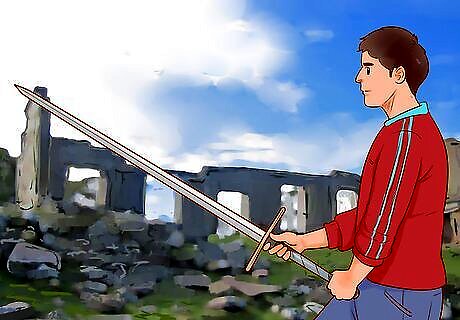
Hold your sword in the "ready" position at all times. The "ready" position allows you to be able to react to all of your opponent's moves. Hold the sword upright in front of you with both hands so the blade is perpendicular to the ground. Holding the sword this way allows you to move it from side to side and up and down with ease.
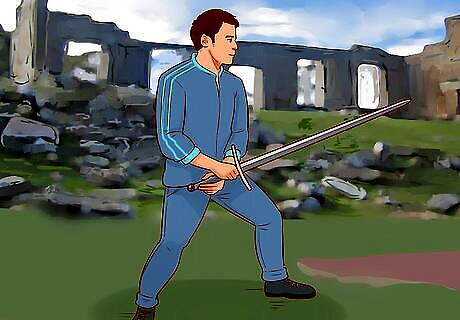
Open your body at a 45-degree angle, your left foot ahead of your right. This position allows you a firm base of support to attack from. It will also provide you support against your opponent's moves and make it more difficult for them to knock you over. Face your hips toward your opponent. Don't aim them to the side of your opponent.
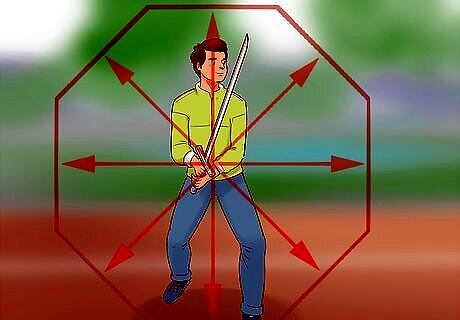
Practice the 8 different angles of attack. There are 8 different basic attacking angles in sword fighting. These are straight down from the top, straight up from the bottom, diagonally down to the left, diagonally down to the right, diagonally up from the left, diagonally up from the right, and left and right strikes horizontally. Use your sword to practice these movements. These are the basic movements of sword fighting and if you perfect them, you'll be much harder to beat.
Defending Yourself

Step away from your opponent's attack. The easiest defensive move in sword fighting is the simple step away. When your opponents bring their sword towards you, take a large step back to avoid their attack. This move will work best when your opponent is trying to cut across your body. Be aware that there are drawbacks to the step away. If your opponent is fast or skilled, they might take the chance to jab you with their sword after you step back.
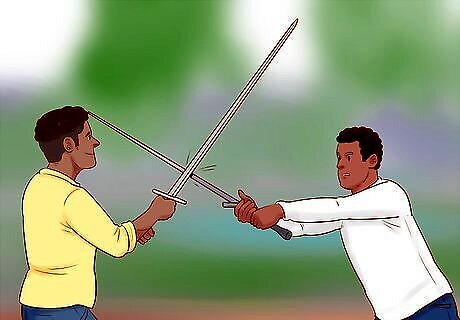
Perform a block against your opponent's move. When your opponent swipes at you with their sword, lift the blade of your sword against theirs to block their attack. Make sure you have plenty of grip on your sword to effectively block your opponent's sword.

Parry your opponent's attack with your sword. The parry is a block that you can turn into an attack. When the opponent attacks you, redirect their attack by pushing their sword out of the way with your sword. Then you can move in to attack them. The parry is a very effective move that allows you to go from defending to attacking in a matter of seconds. You can also block your opponent's attack with your sword before sliding yours away from theirs and launching your attack.
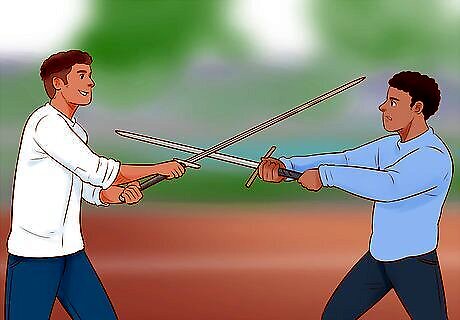
Displace your opponent's sword and hit them as they attack. As your opponent brings their sword towards you, use plenty of force to block their attack and launch your own attack in 1 swift move. Hold your sword in such a way that you can effectively block their attack while hitting them with your sword at the same time. Step into the move for added power against your opponent's attack.

Counter cut against your opponent's attack. The counter cut is a combination of the step back and counter-attack. When your opponent attacks you, step away from their sword and attack their arm with your sword. Doing this will significantly weaken your opponent as you will have injured their fighting arm.
Attacking Your Opponent
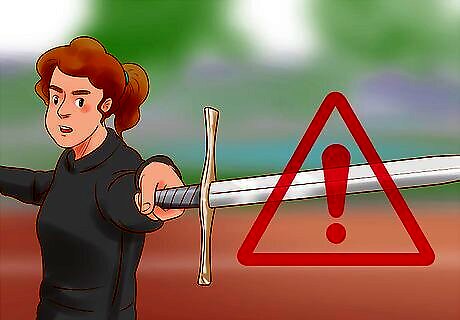
Avoid stabbing movements with your sword. The natural instinct for most people is to try and stab their opponent as soon as they can with their sword. The stabbing move is a terrible move most of the time and it will only make you very vulnerable to your opponent. By moving forward in the stabbing motion, your opponent can attack your upper body with ease or they can step away and attack you from the side as you lunge forward. You should only ever use the stabbing move when your opponent is incredibly vulnerable.

Execute the basic attacking movement. To perform this move, bring your sword forward towards your opponent. Then step towards your opponent and slightly to the right. This will bring you away from your opponent and prevent them from attacking you. Bring your sword down in a straight line and hit your opponent. Bringing your sword forward will make it more difficult for your opponent to launch a counter attack.
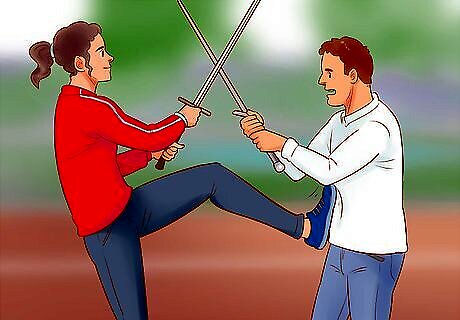
Perform a feint and kick to your opponent's groin. Lift your arms and sword above your head to invite your opponent to attack. When they do attack, block the move with your sword. Hold their sword in place and lift your foot towards their groin. Push with your foot against their body to push them off balance and to allow you to complete the attack. Make sure you and your friends wear groin protection equipment when sword fighting.
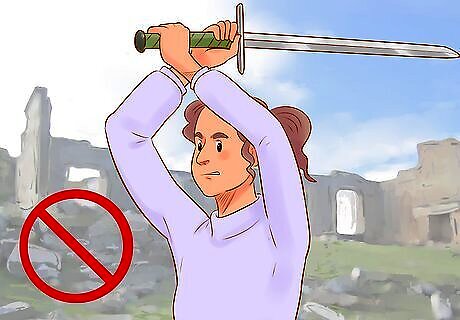
Avoid lifting your arms and sword behind your head. Similar to the stabbing movement, all this move will do is open you up to an attack from your opponent. People think this move will allow them to launch a very powerful blow, but in reality, it only opens them up to their opponent and makes it very easy for their opponent to strike.
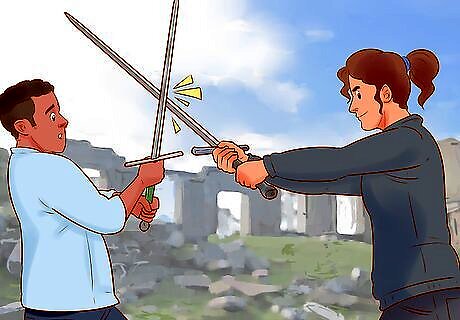
Control the flow of the fight. If you succeed in finding the flow and controlling it, you have a very good chance of almost directly influencing the entire fight directly through your actions. Controlling the fight means your opponent is always on the back foot, giving you a massive advantage during the fight. Try to identify the patterns in how your opponent fights and work against them.




















Comments
0 comment